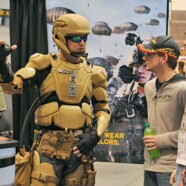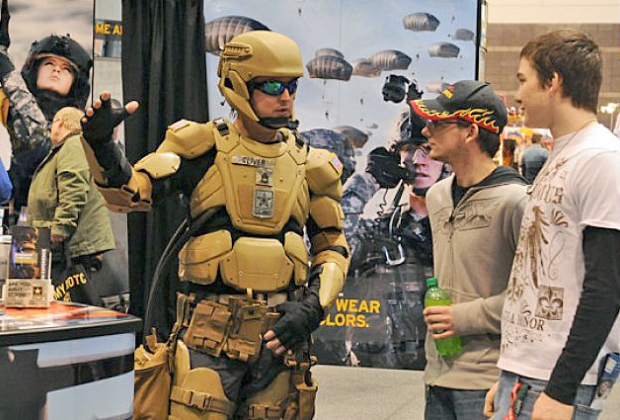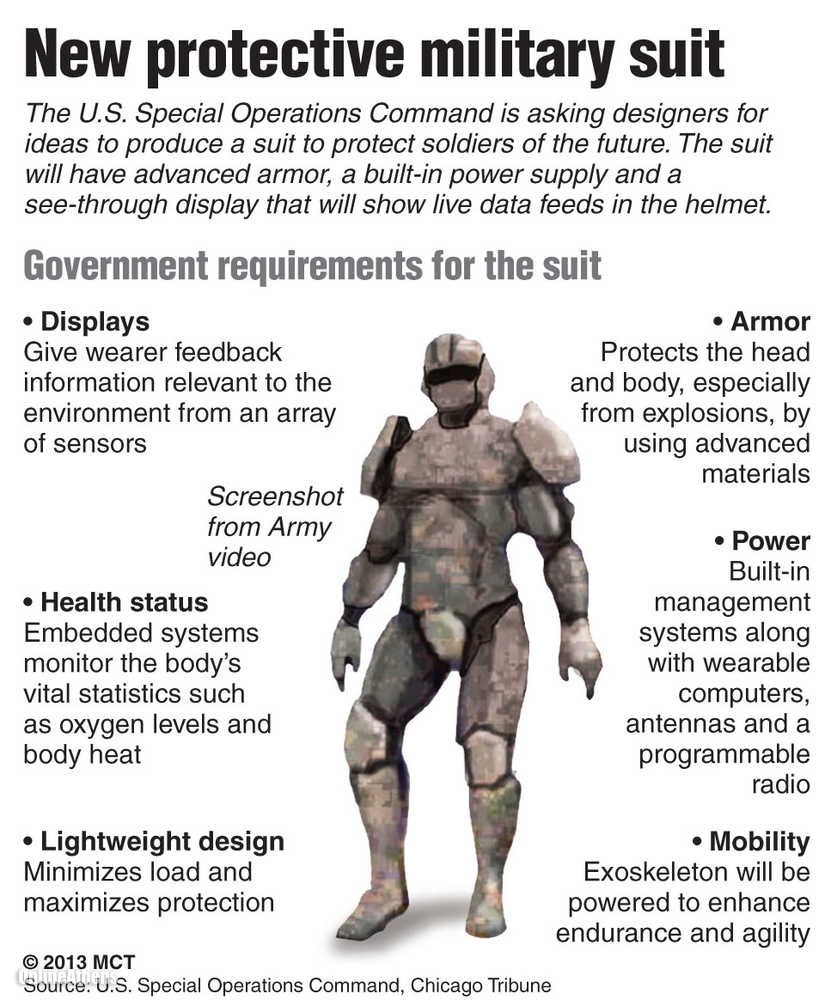Special ops chief McRaven expects ‘Iron Man’ suit by 2018
Adm. William McRaven, the commander of U.S. Special Operations Command, expects special operators to be wearing Tactical Assault Light Operator Suits by 2018, he told attendees of a National Defense Industrial Association symposium Tuesday.
The TALOS, dubbed the ‘Iron Man’ suit, is the brainchild of McRaven. It is designed to enhance the survivability of personnel in the line of fire, and to enhance their physical capabilities.
“Several years ago during a hostage rescue operation in Afghanistan, a SOF (special operations forces) warrior was killed going through the door. Afterwards, one of the young officers asked me a question I couldn’t answer. He said, ‘after all these years in combat, why don’t we have a way to protect our operators going through the door?’ With all the advance in modern technology, I know we can do better. Consequently, at SOCOM we have established a program called … TALOS,” McRaven said.
TALOS is a collaborative effort involving 56 corporations, 16 government agencies, 13 universities, and 10 national laboratories.
“This unique collaboration effort is the future of how we should do business,” McRaven said.
Three unpowered prototype suits are being assembled and are scheduled to be delivered to SOCOM in June. The prototypes will inform the development of a deployable combat suit that should be ready by August 2018, McRaven said.
“That suit, if done correctly, will yield a revolutionary improvement in survivability and capability for special operators,” he said. “If we do TALOS right, it will be a huge comparative advantage over our enemies and give the warriors the protection they need in a very demanding environment.”
McRaven said that going forward, a greater portion of SOCOM funds should go to technology development and acquisitions at the expense of operations and training funds.
“Because of the nature of the fight over the last dozen-plus years, the [Operations and Maintenance] money has provided us the readiness, the training money. We had more of that, we focused more on that … but we got a little bit out of balance in terms of our long-term procurement [and] our long-term [Research and Development],” he said. “We’ve got to put this back into balance in terms of the share of the pie … We’ve got to be prepared to prepare for the future.”
Pivoting to personnel topics, McRaven said preserving the strength and health of the force is SOCOM’s highest priority, noting that a special emphasis will be placed on education and family programs, as well as decreasing the length of deployments and increasing the dwell time for special operators between overseas deployments.
McRaven said that by August, six-month deployments should be standard for tactical units. He wants the dwell time to decrease to a 1:2 ration, meaning when a special operator returns home from a deployment, he or she won’t have to deploy again for 12 months.
In terms of the future in Afghanistan, McRaven said the drawdown in SOF this year will be commensurate with the drawdown of U.S. and NATO conventional forces.
“No matter the size of our presence there next year, our future [military-to-military] engagements with the Afghans will remain vital in the region,” he said.
McRaven said the main focus of SOF going forward will be on training, advising and assisting the Afghan security forces.
When asked if any consideration was being given to training Afghan forces in other countries if the Afghan government doesn’t sign the Bilateral Security Agreement that would allow U.S. forces to stay beyond the end of this year, McRaven demurred.
McRaven said the drawdown in Afghanistan will enable SOCOM to send more special operators to other theaters, including Africa.
“We’ll be able to redistribute that force to support the geographic combatant commanders better; AFRICOM is no exception,” he said.
McRaven said that he wants to recruit people from communities that historically have been underrepresented in the SOF community.
“I don’t care what your gender is, what your orientation is, what your ethnic background is, if you meet the [SOF] standard, we welcome everybody. In today’s environment, frankly I am looking for more and more minorities,” he said. “In Africa, I would like to have some native Africans that are part of the U.S. military come and be part of the program. In Latin America, in Asia, where I can orient folks, I want to be able to do that.”
McRaven also wants to increase the number of women in SOF.
“We saw the great work that the women did for us in Afghanistan and Iraq,” he said. “I think we need to grow that number because I think we need more women as we begin to engage again in a lot of — in a lot of areas around the world” where it is considered inappropriate for men to interact freely with women … “You don’t want to eliminate our engagement with well over 50 percent of the population. That would be a bad approach tactically and strategically.”
Despite the budget challenges that the Defense Department faces, McRaven suggested that SOCOM will have enough money to do all the things it wants to do in the years ahead.
“We’ve spent the last, kind of, six or eight months making an argument to the Joint Staff and OSD on why we need to maintain a certain level of SOF support, and I think that argument resonates,” he said.
SOCOM accounts for 1.7 percent of the Defense Department budget.
McRaven said he goes to Capitol Hill about once a month to meet with lawmakers and promote SOCOM programs. He said his staffers are there every week.
“We’ve had great support from the Hill,” he said.
source: Jon Harper / Stars and Stripes



